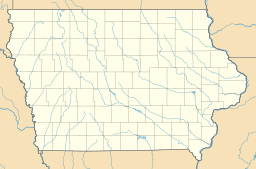Lost Island Lake facts for kids
Quick facts for kids Lost Island Lake |
|
|---|---|
| Location | Palo Alto / Clay counties, Iowa, United States |
| Coordinates | 43°10′20″N 094°54′19″W / 43.17222°N 94.90528°W |
| Basin countries | United States |
| Surface area | 1,162 acres (470 ha) |
| Max. depth | 16 ft (4.9 m) |
Lost Island Lake is a beautiful lake located in Iowa, United States. It covers about 1,200-acre (4.9 km2) of water. This makes it a large and important natural area. The lake is found just north of a town called Ruthven.
Contents
Discovering Lost Island Lake
Lost Island Lake is a natural treasure. It offers a peaceful escape for many people. The lake is known for its calm waters and natural beauty. It plays a big role in the local environment.
Where is it?
Lost Island Lake is in northwest Iowa. It stretches across two different counties. These are Palo Alto County and Clay County. The lake's location makes it easy to reach for many visitors. It is a popular spot for outdoor activities.
What's special about it?
This lake is quite large, covering over 1,100 acres. It is also fairly shallow, with a maximum depth of about 16 ft (4.9 m). This depth can affect the types of plants and animals that live there. The lake's size and features make it a great place for many different activities.
Fun Activities
Lost Island Lake is a hub for outdoor fun. Many people enjoy fishing here. The lake is home to various types of fish. Boating is another popular activity. You can see many boats on the water during warmer months. It's a great place for families to spend time together.
Wildlife and Nature
The area around Lost Island Lake is rich in wildlife. Many different birds can be seen near the water. You might spot ducks, geese, and other waterfowl. The lake's ecosystem supports various plant species too. These plants provide food and shelter for the animals. It's a wonderful spot for nature lovers.
Protecting the Lake
Keeping Lost Island Lake healthy is very important. Efforts are made to protect its water quality. This helps to keep the fish and other wildlife safe. It also ensures the lake remains a beautiful place for everyone to enjoy. Local groups often work to preserve this natural resource.



